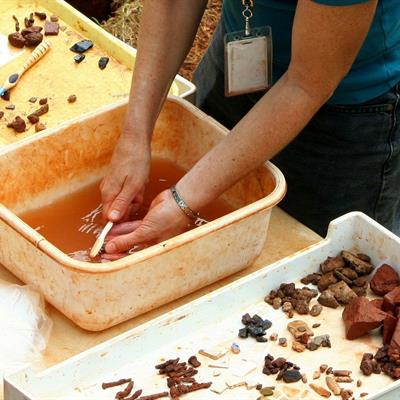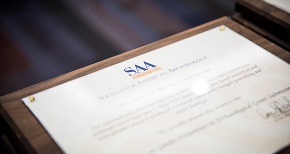
Registration Closed!
Historic Ceramics Identification
When: October 05, 2021 1:00-3:00 PM ET
Duration: 2 hours
Certification: RPA-certified
Pricing
Individual Registration: $99 for SAA members; $149 for non-members
Group Registration: $139 for SAA members; $189 for non-members
Dr. Lindsay Bloch has over 15 years experience as a historical archaeologist, focusing on ceramics manufacture and use. She has collaborated for many years with the Digital Archaeological Archive of Comparative Slavery (DAACS), overseeing the identification and cataloging of 17th-20th C. site assemblages. DAACS has developed one of the most detailed cataloging procedures for historical ceramics. She is well versed in historic pottery made in Great Britain, as well as continental Europe and North America, and has analyzed collections from British, Spanish, and French colonial contexts. Dr. Bloch currently runs the Ceramic Technology Laboratory at the Florida Museum (University of Florida) where she routinely identifies artifacts and conducts trainings for the archaeological community, as well as performing a variety of specialized analyses.
Accurate identification of ceramic types is foundational to historical archaeology, given the ubiquity of ceramics on sites and the importance of ceramic change over time for establishing site chronology. There are a variety of different approaches to identification, emphasizing origin, decoration, or production method. This seminar will use a technology-based approach, teaching how to identify how an object was made, given the strong relationships between manufacture, and geographic and temporal variation. The seminar will cover the 4 main ceramic materials (coarse earthenware, refined earthenware, stoneware, and porcelain), outline the characteristics of the primary manufacturing techniques, and discuss broad trends in decorative motifs/techniques. This approach will provide participants with a toolkit for identifying wares they may encounter, based on key diagnostic features.
- Distinguish four main ceramic materials (coarse earthenware, refined earthenware, stoneware, porcelain)
- Recognize technological change in pottery production through time
- Recognize decorative change in pottery production through time


